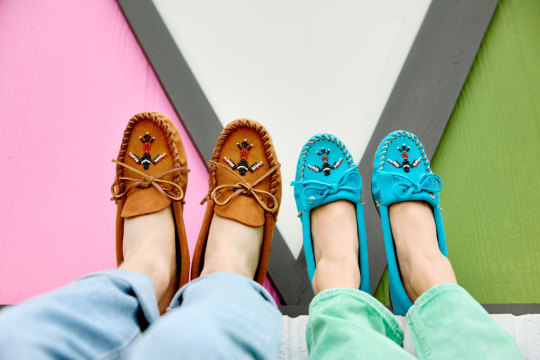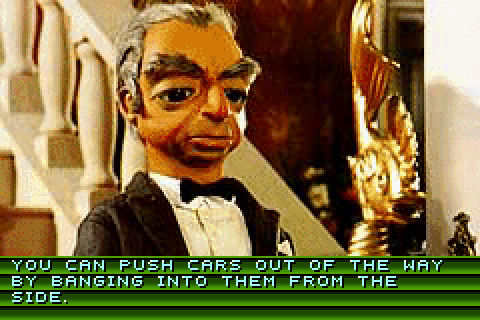#The Thunderbirds
Explore tagged Tumblr posts
Text

Saturdays are made for watching The Thunderbirds! Here in Melbourne Australia, The Thunderbirds was aired for well over 20 years continuously on a Saturday morning timeslot from 6am to 7am, giving the show some kind of record as the most continuously repeated TV series in the southern hemisphere! Someone at Channel 9 must have had a great love for the show! The other bizarre thing was the show aired uninterrupted, without commercials, quite nice!
8 notes
·
View notes
Text
Thinking about how 2 of Gerry Anderson's shows have been rebooted (semi) recently - Captain Scarlet in 2005 (w the terrifying 2005 era cgi 😅) and Thunderbirds.
And now I'm wondering which one might be next? I'd love to see a modern take on Stingray but what do y'all think?
Have I missed a reboot?
Reblog and let me know which show you'd like to see and how you'd like it done? I love the physical sets with cgi characters that the did for TAG but that's cuz I'm a bit of a slut for physical effects.
#thunderbirds are go#the thunderbirds#international rescue#gerry anderson#supermarionation#captain scarlet#captain scarlet and the mysterons#stingray#fireball XL5#joe 90
24 notes
·
View notes
Text

Navidad con los Thunderbirds.
16 notes
·
View notes
Text

Dorothea Lasky, from "Misunderstood," in Thunderbird
9K notes
·
View notes
Text
The Thunderbirds Named Founding Partner of Ford Championship presented by KCC
The Thunderbirds Named Founding Partner of Ford Championship presented by KCC As part of tournament partnership, official purse increased to $2.25 million GILBERT, Ariz. – The Ford Championship presented by KCC today announced that The Thunderbirds have joined the tournament family as a Founding Partner. As part of its relationship, The Thunderbirds have dedicated $250,000 to the tournament…

View On WordPress
#driveon#FightAndGrind#Arizona Golf#invited golf courses#lpga news#Seville golf and country club#the ford championship#the Thunderbirds
0 notes
Text






Shigeru Komatsuzaki's box art for Thunderbirds model kits.
662 notes
·
View notes
Text






New batch of Hellboy meeting cryptids and legends is in!
Other Hellboy has cryptids art:
Her e’s one
Here’s another
And another
#hellboy#hellboy fan art#hellboy meets the cryptids#thunderbird#the squonk#big foot#sasquatch#cryptids
771 notes
·
View notes
Photo
Verano en el campamento de Los Thunderbirds.

Summer Sunday at Tracy Island…
312 notes
·
View notes
Text

Article Link
"Minnetonka first started selling its “Thunderbird” moccasins in 1965. Now, for the first time, they’ve been redesigned by a Native American designer.
It’s one step in the company’s larger work to deal with its history of cultural appropriation. The Minneapolis-based company launched in the 1940s as a small business making souvenirs for roadside gift shops in the region—including Native American-inspired moccasins, though the business wasn’t started or run by Native Americans. The moccasins soon became its biggest seller.

[Photo: Minnetonka]
Adrienne Benjamin, an Anishanaabe artist and community activist who became the company’s “reconciliation advisor,” was initially reluctant when a tribal elder approached her about meeting with the company. Other activists had dismissed the idea that the company would do the work to truly transform. But Benjamin agreed to the meeting, and the conversation convinced her to move forward.
“I sensed a genuine commitment to positive change,” she says. “They had really done their homework as far as understanding and acknowledging the wrong and the appropriation. I think they knew for a long time that things needed to get better, and they just weren’t sure what a first step was.”

Pictured: Lucie Skjefte and son Animikii [Photo: Minnetonka]
In 2020, Minnetonka publicly apologized “for having benefited from selling Native-inspired designs without directly honoring Native culture or communities.” It also said that it was actively recruiting Native Americans to work at the company, reexamining its branding, looking for Native-owned businesses to partner with, continuing to support Native American nonprofits, and that it planned to collaborate with Native American artists and designers.
Benjamin partnered with the company on the first collaboration, a collection of hand-beaded hats, and then recruited the Minneapolis-based designer Lucie Skjefte, a citizen of the Red Lake Nation, who designed the beadwork for another moccasin style and a pair of slippers for the brand. Skjefte says that she felt comfortable working with the company knowing that it had already done work with Benjamin on reconciliation. And she wasn’t a stranger to the brand. “Our grandmothers and our mothers would always look for moccasins in a clutch kind of situation where they didn’t have a pair ready and available to make on their own—then they would buy Minnetonka mocs and walk into a traditional pow wow and wear them,” she says. Her mother, she says, who passed away in 2019, would have been “immensely proud” that Skjefte’s design work was part of the moccasins—and on the new version of the Thunderbird moccasin, one of the company’s top-selling styles.

[Photo: Minnetonka]
“I started thinking about all of those stories, and what resonated with me visually,” Skjefte says. The redesign, she says, is much more detailed and authentic than the previous version. “Through the redesign and beading process, we are actively reclaiming and reconnecting our Animikii or Thunderbird motif with its Indigenous roots,” she says. Skjefte will earn royalties for the design, and Minnetonka will also separately donate a portion of the sale of each shoe to Mni Sota Fund, a nonprofit that helps Native Americans in Minnesota get training and capital for home ownership and entrepreneurship.
Some companies go a step farther—Manitobah Mukluks, based in Canada, has an Indigenous founder and more than half Indigenous staff. (While Minnetonka is actively recruiting more Native American workers, the company says that employees self-report race and it can’t share any data about its current number of Indigenous employees.) Beyond its own line of products, Manitobah also has an online Indigenous Market that features artists who earn 100% of the profit for their work.
White Bear Moccasins, a Native-owned-and-made brand in Montana, makes moccasins from bison hide. Each custom pair can take six to eight hours to make; the shoes cost hundreds of dollars, though they can also be repaired and last as long as a lifetime, says owner Shauna White Bear. In interviews, White Bear has said that she wants “to take our craft back,” from companies like Minnetonka. But she also told Fast Company that she doesn’t think that Minnetonka, as a family-owned business, should have to lose its livelihood now and stop making moccasins.
The situation is arguably different for other fashion brands that might use a Native American symbol—or rip off a Native American design completely—on a single product that could easily be taken off the market. Benjamin says that she has also worked with other companies that have discontinued products.
She sees five steps in the process of reconciliation. First, the person or company who did wrong has to acknowledge the wrong. Then they need to publicly apologize, begin to change behavior, start to rebuild trust, and then, eventually, the wronged party might take the step of forgiveness. Right now, she says, Minnetonka is in the third phase of behavior change. The brand plans to continue to collaborate with Native American designers.
The company can be an example to others on how to listen and build true relationships, Benjamin says. “I think that’s the only way that these relationships are going to get any better—people have to sit down and talk about it,” she says. “People have to be real. People have to apologize. They have to want to reconcile with people.”
The leadership at Minnetonka can also be allies in pushing other companies to do better. “My voice is important at the table as an Indigenous woman,” Benjamin says. “Lucie’s voice is important. But at tables where there’s a majority of people that aren’t Indigenous, sometimes those allies’ voices are more powerful in those spaces, because that means that they’ve signed on to what we’re saying. The power has signed on to moving forward and we agree with ‘Yes, this was wrong.’ That’s the stuff that’s going to change [things] right there.”"
-via FastCompany, February 7, 2024
#indigenous#indigenous artists#indigenous art#moccasins#thunderbird#native american#native american art#cultural appropriation#indigenous peoples#cultural representation#minnesota#minnetonka#minneapolis#red lake nation#ojibwe#anishinaabe#reconciliation#fashion#fashion news#good news#hope#indigenous designers#native artist#indigenous artist
1K notes
·
View notes
Text





Ford Thunderbird PSV-102, 1955. An experimental first generation Thunderbird fitted with a Boeing gas turbine engine. Accounting for inflation, $188,000 in 1955 is worth $2,159,859 in 2024 so that was quite an investment
#Ford#Ford Thunderbird#Ford Thunderbird PSV-102#gas turbine#Boeing engine#experimental car#test vehicle#1955#1950s#first generation#turbine
689 notes
·
View notes
Text

1966 Ford Thunderbird Convertible
Here are some facts about the 1966 Ford Thunderbird Convertible:
Engine: The 1966 Thunderbird had a 390-cubic-inch V8 engine that produced 315 horsepower. A larger 428-cubic-inch V8 engine was also available, producing 345 horsepower and improving the 0-60 mph time to about 9 seconds.
Front clip: All 1966 Thunderbirds had a new front clip.
Wheelbase: The 1966 Thunderbird had a 113.2-inch wheelbase.
Construction: The 1966 Thunderbird had a unibody construction and a powertrain that was trouble-free.
Disc brakes: The 1966 Thunderbird had disc brakes, which were a must-have feature for safety.
Options and accessories: The 1966 Thunderbird had power steering, power windows, power vent windows, power seats, power antenna, am-fm radio, retractable top, swing away wheel, and seat belts.
Production: 69,170 1966 Thunderbirds were produced.
#Ford Thunderbird Convertible#car#cars#muscle car#american muscle#ford#ford thunderbird#convertible#thunderbird
304 notes
·
View notes
Text

2K notes
·
View notes
Text

Dorothea Lasky, from "I want to die," in Thunderbird
520 notes
·
View notes

